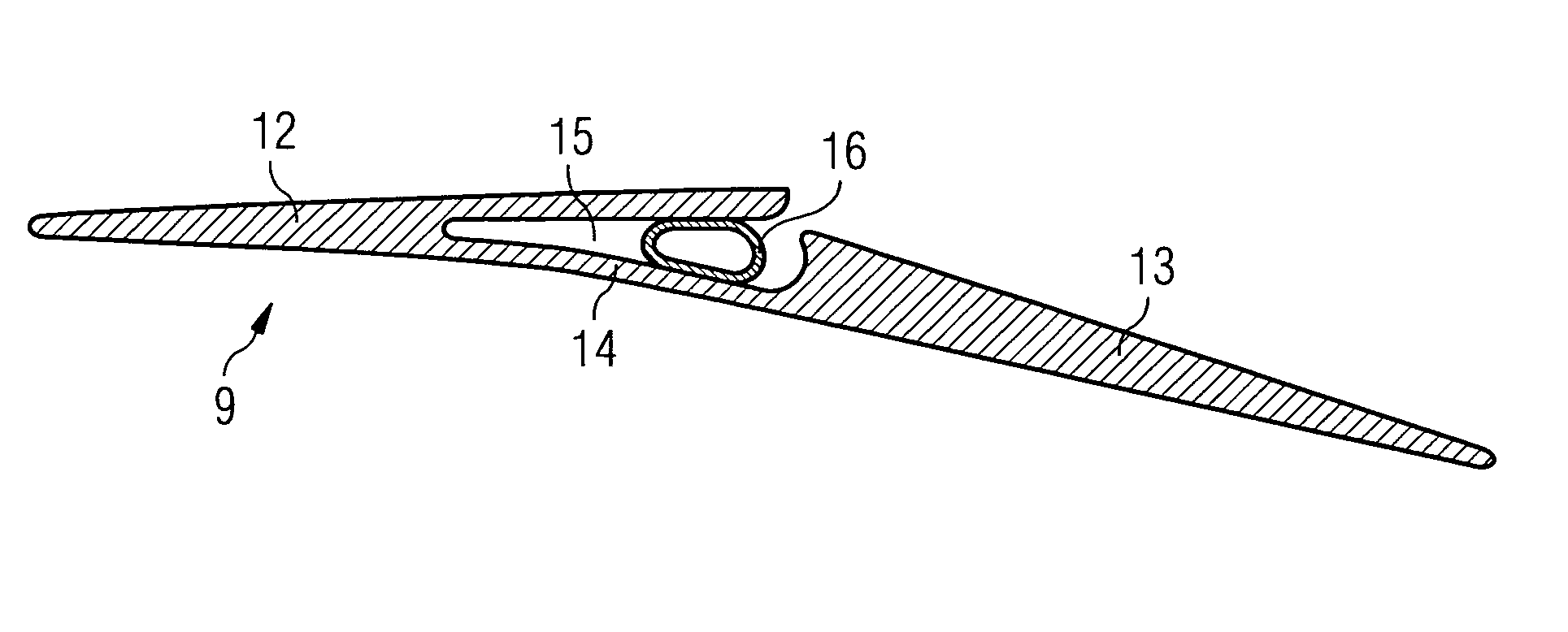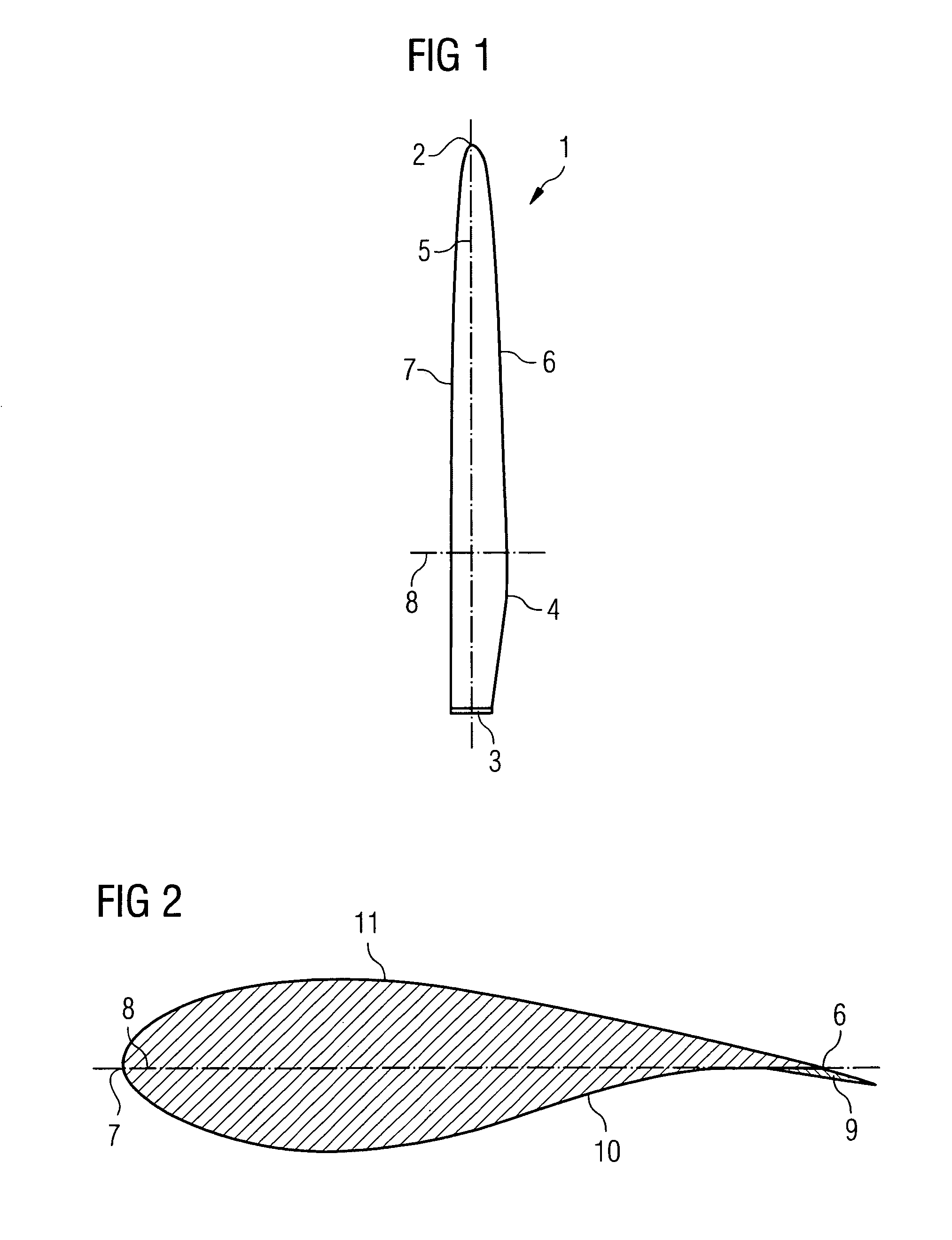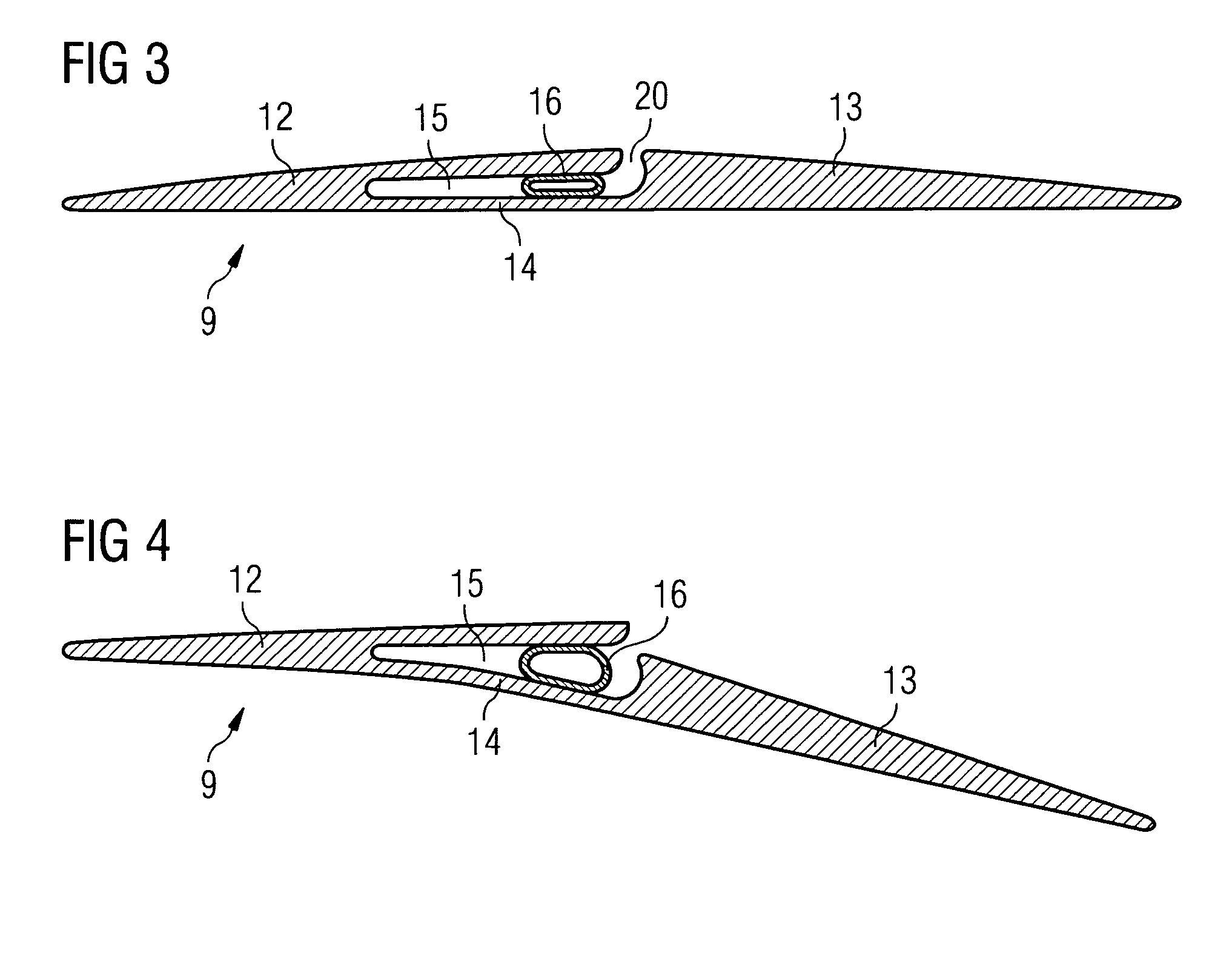Actuation system for a wind turbine blade flap
a technology of actuator system and wind turbine blade, which is applied in the direction of rotors, marine propulsion, vessel construction, etc., can solve the problems of cyclic pitch, wear on the actuator system, and the bearing of the pitch, and achieve the effect of easy deformation and easy handling of the flap
- Summary
- Abstract
- Description
- Claims
- Application Information
AI Technical Summary
Benefits of technology
Problems solved by technology
Method used
Image
Examples
Embodiment Construction
[0027]Now a first embodiment will be described with reference to FIGS. 1 to 4. FIG. 1 schematically shows a typical wind turbine rotor blade 1 in a top view. One can see in FIG. 1 the characteristic geometrical features of a turbine blade which are the blade root 3, the shoulder 4, the tip point 2, the leading edge 7, the trailing edge 6, the span line 5 and the chord line 8. At the blade root 3 the rotor blade is mounted to a rotor hub. The tip point 2 characterises the maximum radial position of the blade, measured from the blade root 3 along the span 5.
[0028]The span line 5 connects the blade root 3 with the tip point 2. The chord line 8 indicates the direction perpendicular to the span line 5. Chord means the maximum width of the turbine blade perpendicular to the span 5. Shoulder 4 means the radial position, measured from the blade root 3, where the chord has its maximum value. The trailing edge 6 is the downstream edge of the blade and extends from the blade root 3 along the s...
PUM
 Login to View More
Login to View More Abstract
Description
Claims
Application Information
 Login to View More
Login to View More - R&D
- Intellectual Property
- Life Sciences
- Materials
- Tech Scout
- Unparalleled Data Quality
- Higher Quality Content
- 60% Fewer Hallucinations
Browse by: Latest US Patents, China's latest patents, Technical Efficacy Thesaurus, Application Domain, Technology Topic, Popular Technical Reports.
© 2025 PatSnap. All rights reserved.Legal|Privacy policy|Modern Slavery Act Transparency Statement|Sitemap|About US| Contact US: help@patsnap.com



